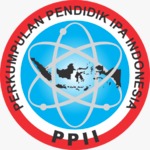Pengembangan Media Pembelajaran Fisika Interaktif Berbasis Flash
DOI:
https://doi.org/10.29408/kpj.v6i2.7507Keywords:
interactive Learning Media, Flash-basedAbstract
This study aims to produce interactive physics learning media based on macromedia flash 8 straight motion material for Class VII students of SMP/MTs. This type of research uses the Research and Development (R&D) approach by adopting the ADDIE development model (Analyse, Design, Development, Implementation, and Evaluation). The design of learning media trials uses the Post-Test Only Control Group Design. The data collection instruments were material expert evaluation questionnaires, media expert evaluation questionnaires, science subject teacher evaluation questionnaires, student response questionnaires, multiple choice tests and student learning activity questionnaires. Data collection techniques were test techniques and observation techniques. Data analysis techniques are media feasibility test, normality test, variance homogeneity test and hypothesis testing. The results of the study from the aspect of the feasibility of learning media, media experts stated that it was feasible with an actual score of 75, material experts stated that it was feasible with an actual score of 73, teachers of science subjects stated that it was feasible with an actual score of 66, and the average response score of 4 students was 58.25 . While the research results from the aspect of learning media trials show that interactive physics learning media based on Macromedia Flash 8 is effective on student learning outcomes with an average experimental class score of 70.38 and classical learning mastery of 71.42%. The percentage of active students is in the good category with a percentage of 69.09%. When compared with the control class with an average value of 50.37 and 22.22% classical learning completeness. The percentage of active students falls into the moderate category with a percentage of 41.82%.References
Akhyar H. M. Tawil, D. I. (2014). Penerapan Pendekatan Scientific Pada Model Pembelajaran Kooperatif Tipe Think Pair Share Untuk Meningkatkan Pemahaman Siswa Di Kelas VII SMPN 6 PALU. Jurnal Elektronik Pendidikan Matematika Tadulako, Volume 2 Nomor 1, September, 88.
Daryanto (2014). Pembelajaran Pendekatan Saintifik Kurikulum 2013. (cetakan pertama). Yogyakarta: Gava Media.
Dimyati dan Mudjiono. 1999. Belajar dan Pembelajaran, (Jakarta: PT. Rineka Cipta.
Fadlillah. (2014). Implementasi Kurikulum 2013 dalam pembelajaran SD/MI, SMP/Mts, SMA/MA. Yogyakarta: AR-RUZZ MEDIA.
Hasibuan dan Moedjiono. (2002). Proses Belajar Mengajar. Bandung: PT. Remaja Rosdakarya.
Hosnan. 2014. Pendekatan Saintifik dan KontekstualDalam Pembelajaran Abad 21.
Jakarta. Ghalia Indonesia.
Purwanto, Ngalim. 2004. Prinsip-prinsip dan Teknik Evaluasi Pengajaran, Bandung: PT. Remaja Rosda Karya,
Sani, A, R. (2018). Pembelajaran Saintifik untuk Implementasi Kurikulum 2013. Jakarta: Bumi Aksara.
Sugiyono. 2012. Metode penelitian kuantitatif, kualitatif, dan r & d. Bandung: Alfabeta.
Sufairoh. (2016). Pendekatan Saintifik & Model Pembelajaran K-13. JURNAL Pendidikan Profesional, Volume 5, No. 3, Desember, 120.
Thiagarajan, S. and Semmel. 1974. Instructional Development for Training Teachers of Exceptional Chirdren. Indiana: Indiana University Bloomington.
Tri Mulyani, K. C. (2015). Implementasi Pendekatan Scientific Dengan Model
Pembelajaran Berbasis Masalah (Problem Based Learning) Dalam
Peningkatkan Pembelajaran IPA Pada Siswa Kelas IV SD. Kalam Cendekia,
Volume 3, Nomor 1.1, 26.









